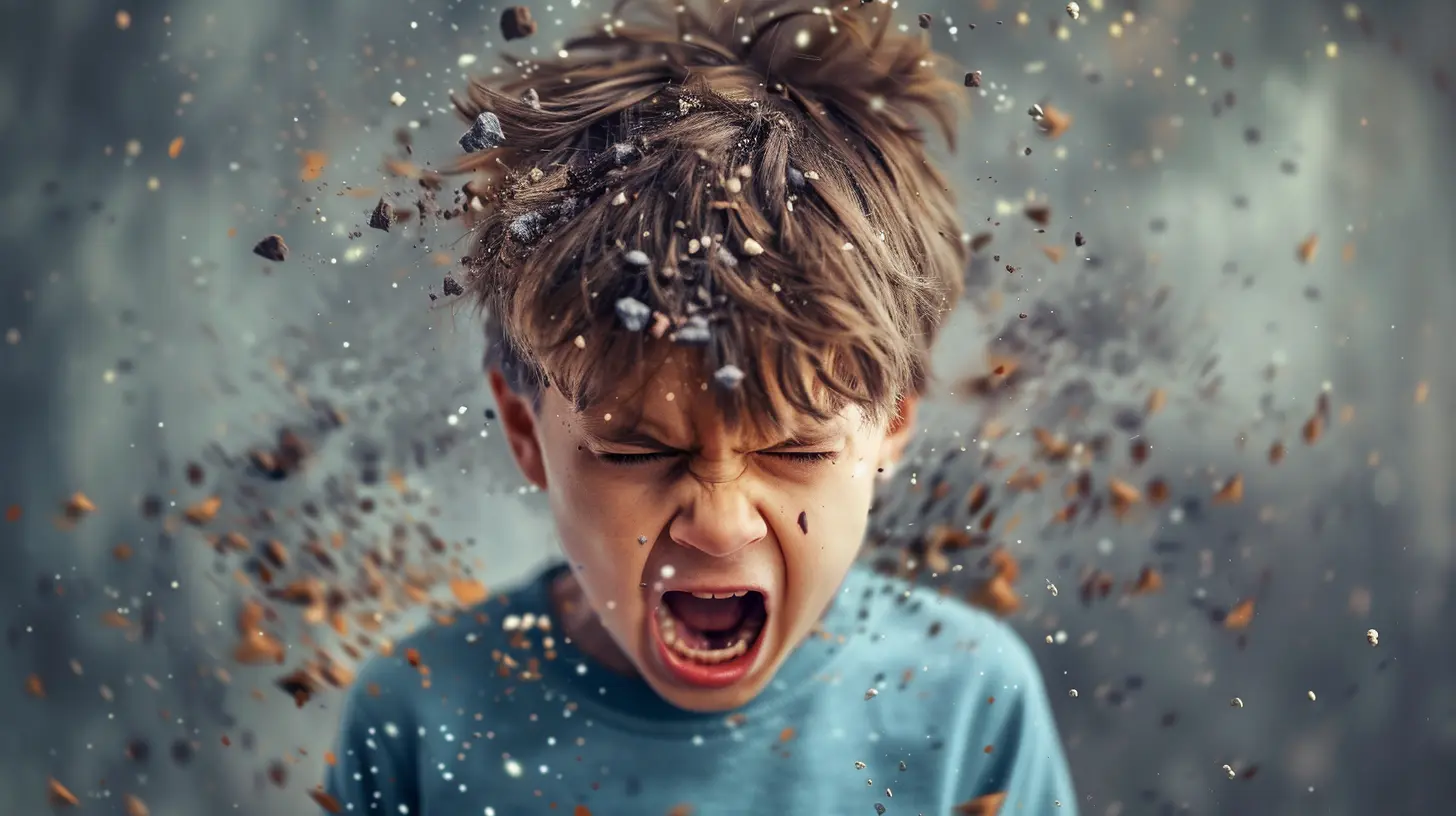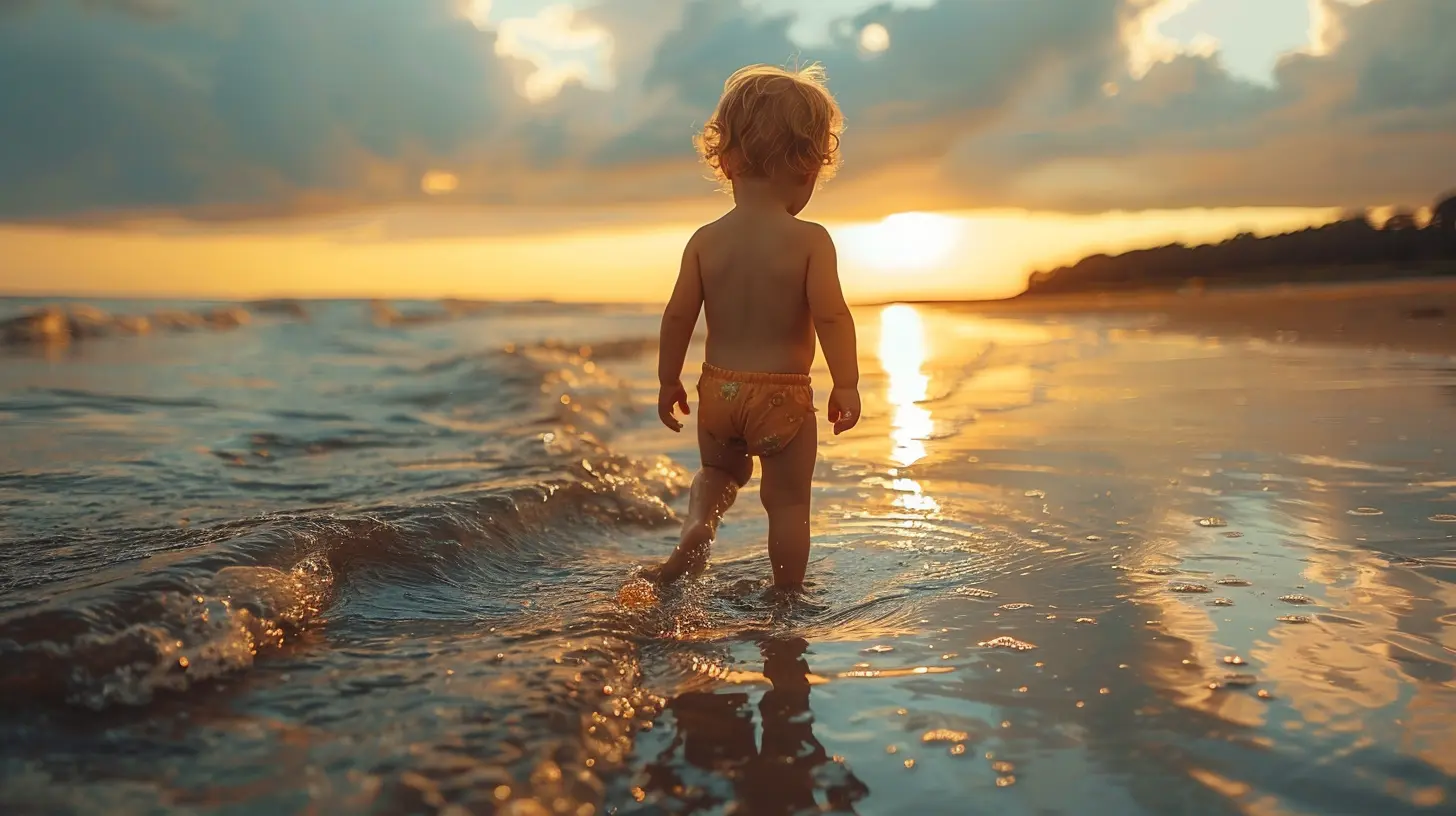Handling Childhood Separation Anxiety with Confidence and Care
25 September 2025
Separation anxiety. Just the sound of those two words is enough to make any parent wince a little, right? You’re not alone. If the daily goodbye at daycare feels more like a heartbreaking farewell scene from a drama movie than just a simple “see you later,” then welcome to the club—because you’re definitely not the only one.
Whether you’re dealing with full-blown tears every morning or just a lingering clinginess when you try to leave the room, handling childhood separation anxiety can feel like walking a tightrope. It's a deeply emotional part of parenting, but here’s the good news: it’s normal, and more importantly, it’s manageable—with a little confidence and a whole lot of care.
Let’s take a deep breath together and dig into what separation anxiety really is, why it happens, and how we can approach it without losing our cool (or our minds).
What Is Childhood Separation Anxiety, Really?
Let’s cut to the chase—separation anxiety isn’t just your child being “overly dramatic.” It’s a real emotional response that develops when your little one starts to understand two things:1. You exist even when you're not in the room.
2. They still need you around to feel safe.
It usually kicks in between 8 months and 3 years, though it can pop up again during major transitions—like starting preschool, moving homes, or even after a long holiday break.
It’s their way of saying, “Hey, I don’t feel okay being away from you yet.”
And every child experiences this differently. Some may scream, some might silently cling, others may get physically sick (yes, anxiety can do that!). But at the core, it’s all about attachment—and honestly, that’s not a bad thing. It just means they love you and trust you.
Why Separation Anxiety Happens
Here's a not-so-fun-fact: handling separation anxiety is as much about our emotions as parents as it is about our children’s.Your child cries when you leave? You feel guilty.
You feel guilty? You try to make the drop-off quick, or sneak out.
You sneak out? Your child becomes even more anxious next time.
It’s a vicious little cycle, isn’t it?
Most of the time, separation anxiety is triggered by change—like a new environment or caregiver. Sometimes, it’s even influenced by our own vibes. If we’re nervous or unsure, they pick up on it. Kids are way more perceptive than we give them credit for.
Spotting the Signs: What Separation Anxiety Looks Like
Before we move ahead, let’s make sure we’re actually dealing with separation anxiety—because let’s face it, kids cry for all sorts of reasons. Here’s what to look for:- Reluctance or refusal to be away from a parent or caregiver
- Intense crying or tantrums when you try to leave
- Clinging, grabbing, or refusing to let go
- Nightmares or trouble sleeping alone
- Physical symptoms like stomachaches, headaches, or nausea
- Worrying a lot about losing you or something bad happening
If your child is consistently reacting this way in situations where separation is necessary (school, babysitter, bedtime), it’s a pretty good indicator that separation anxiety is at play.
The Brain Behind the Behavior
Want to get a little nerdy for a moment? Let’s understand what’s happening in your child’s brain.During early childhood, the part of their brain responsible for rational thought (the prefrontal cortex) is still developing. But the part responsible for emotion and fear (the amygdala)? Oh, it’s fully functional. That’s why young kids feel very strongly, but can’t always process or manage those feelings just yet.
So when you leave? Their emotional brain says, "Panic! Danger! I need my person!" And unless we help guide them through that stress, they don't learn how to regulate it themselves.
How to Help Your Child Cope: Strategies That Actually Work
Okay, let’s get to the good stuff—the how. This is where you roll up your sleeves, channel some serious patience, and lean into a whole bunch of love.1. Normalize the Feelings
Start with empathy: “It’s okay to feel a little worried when Mommy leaves, but I’ll always come back.”Let them know their feelings are valid, not something to be ashamed of. Think about it—wouldn’t you feel a little anxious if your source of comfort walked out the door without warning?
2. Practice Short Goodbyes
Instead of making leaving time a massive event, keep it brief and confident:- Hug
- Smile
- “I’ll see you later, have fun!”
Done.
Don’t drag it out. Long goodbyes can actually increase anxiety. Think of yourself like a flight attendant—you’ve got to look calm, even when the plane hits a little turbulence.
3. Build Predictable Routines
Kids love routine. It helps them feel safe when everything else seems out of their control.Have a consistent goodbye routine—maybe a special handshake, a goodbye kiss ritual, or a silly phrase you say each time. Repetition = reassurance.
4. Stay Consistent
This part can be tough, but you’ve got to follow through. If you say you’re leaving for work and coming back at dinnertime, then do exactly that.Consistency builds trust. And when your child trusts that you’ll always return, the anxiety begins to shrink a bit.
5. Give Them a Comfort Object
Sometimes, a little reminder of you helps a LOT. A small stuffed animal, a family photo, or even a “hug button” drawn on their hand can be incredibly comforting.It’s like emotional armor for their day.
6. Avoid Sneaking Away
I know it seems like the easier option—sneak out while they’re distracted to avoid the waterworks.But here’s the thing: it actually breaks trust. Your child learns to fear that you’ll disappear without warning, making the anxiety worse over time.
Always say goodbye, even if it’s hard.
7. Talk About It
At a calm, non-emotional time—maybe at bedtime or during play—talk about the times when you left and came back. You might say:“Remember when I dropped you off at school today and you were feeling sad? But then you played with your friends and I came back, just like I said I would?”
This reinforces the idea that separation is temporary, not scary.
When Separation Anxiety Starts to Interfere
Now, a little separation anxiety is totally normal. It’s when it begins to interfere with your child’s ability to function (or your own), that it might be time to look for extra support.Signs It May Be More Than Just a Phase:
- It continues intensely beyond age 6 or 7- Your child refuses to go to school or leave the house
- The anxiety disrupts daily life and routines
- Physical symptoms are frequent and severe
- You feel completely overwhelmed and unsure how to handle it
Don’t hesitate to reach out to a pediatrician, therapist, or school counselor. There’s absolutely no shame in asking for help—because sometimes love needs a little backup.
What NOT to Do When Your Child Has Separation Anxiety
Let’s flip the script for a second. In trying to help, we parents sometimes (unintentionally) make things harder. Here’s what to avoid:- Don’t trivialize their fears. Saying “You’re being silly” or “There’s nothing to worry about” discredits their feelings.
- Don’t bribe or reward crying. This can unintentionally reinforce the behavior.
- Don’t lose your patience. (Easier said than done, I know!) But reacting with frustration often worsens anxiety.
Instead, focus on connection and calmness. Be the anchor in their stormy sea.
Reframing Separation as a Building Block
Here’s a little mindset shift for all you incredible parents out there: separation isn’t just something difficult to endure—it’s something that builds emotional resilience.Every goodbye you navigate with care teaches your child how to manage big feelings, trust relationships, and develop independence. These are skills they carry for life.
So, even though it feels hard now, you’re helping shape your child's emotional foundation in a truly powerful way.
Final Thoughts: You’ve Got This
Let’s be real—handling childhood separation anxiety is no walk in the park. It’s messy, unpredictable, and emotionally draining at times. But it also comes with the territory of parenting tiny humans who are learning how to feel safe in the world.The key is to respond with confidence, even when you’re faking it a bit, and a whole lot of care, because that’s what your child needs most.
And remember—this phase won’t last forever. One day, they’ll wave you off without a second glance, and your heart will ache in a whole different way.
So hang in there, nurture the bond, and celebrate the little wins. You’re doing better than you think.
all images in this post were generated using AI tools
Category:
Emotional DevelopmentAuthor:

Maya Underwood
Discussion
rate this article
1 comments
Carmen Sharpe
Navigating childhood separation anxiety can be challenging, but your love and support are key. Remember, each small step builds confidence, fostering resilience in your child. Trust in your bond—together, you’ll thrive through this!
October 5, 2025 at 4:35 PM

Maya Underwood
Thank you for your thoughtful insight! I completely agree—love and support are essential in helping children thrive through separation anxiety.


